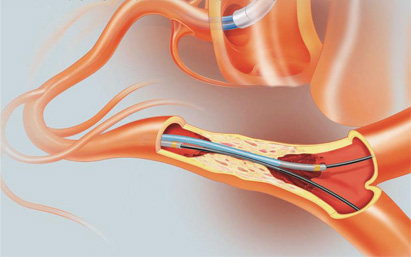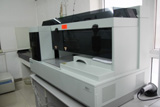Interventional Therapy of Peripheral Vascular Disease

- Quick look
- What is Peripheral Vascular Disease
- Pathologicalchanges of renal blood vessels
- Interventional Therapy
What is Peripheral Vascular Disease
Peripheral Vascular Disease refers to all kinds of vascular diseases with except Cardia-cerebrovascular Disease, including arterial, venous and arteriovenous mixed diseases. According to the survey of WHO (World Health Organization), PVD (Peripheral Vascular Disease) is a high incidence of disease with great harmfulness. It has been on the rise year by year. If it is not treated timely, patient's disease condition will continuously developing. What's worse, patients may need to receive amputation and be crippled even be dying.
Pathologicalchanges of renal blood vessels
Stenosis, occlusion, expansion, rupture and venous valve insufficiency
Common diseases:
Chest/abdominal aortic aneurysm and dissection, hardening of the arteries caused by small and medium-sized artery occlusion (such as lower limb arteriosclerosis occlusion syndrome, renal artery stenosis, etc.), and multiple aorto arteritis raynaud's syndrome, diabetic foot, lower extremity deep vein thrombosis, etc.
Clinical symptoms:
1. Aorta and renal artery lesions: patients with high blood pressure and diabetes are easy to get renal artery stenosis and aortic dissection. The mainly symptoms of renal artery stenosis is high blood pressure, and the mainly symptoms of aortic dissection is badly pains on the substernal, if left it untreated, the patient's life will be in great risk.
2. Artery disease on limbs: the typical symptoms of those disease is insufficient blood supply on the far side of the stenosis or occlusion artery. In the early stage, intermittent claudication may be the only manifestation, but with the disease developed more symptoms will appear, such as rest pain, ochrodermia and numb. Moreover, those symptoms may be aggravated in winter and after patient touch the cold water or do some improper activity. In the advanced stage of this disease, the extremities may goes black, ulcers and gangrene, then people have to take amputation.
3. Venous disease on limbs: deep venous thrombosis is the most common disease, which often shows the limbs swelling and persistent pain, after after rising the limb those symptoms can be relieved. Usually, aged people or cancer patients and other patients who need to lie in bed for long time they are easy to get this disease. One of the most complication of this disease is Pulmonary Embolism which may threat patient's life.
4. The precava/inferior vena cava syndrome: it refers to a series of symptoms caused by the precava/inferior vena cava obstruction. Foreign oppression or endogenous tumor emboli blocking of malignancy, and congenital exogenous oppression are the common causes of this disease. Superior vena cava obstruction syndrome is often characterized by upper limbs and the head and facial edema, even Encephaledema. Inferior vena cava and iliac vein occlusion can be characterized by ascites, lower limb swelling, and abdominal wall superficial varicose veins of lower limbs
For patient with the above symptoms, especially the aged patient with hypertension and hyperlipidemia and hyperglycemia should pay high attention to vascular disease.
Interventional Therapy
The treatment of vascular disease is divided into internal medicine, drug therapy, surgical therapy and intervention treatment. With the development of technology and equipment, the advantages of interventional treatment for vascular disease have become more and more obvious. Compared with other therapy, it is more efficient and safer. Through a variety of advanced vascular interventional technology, all kinds of vascular stenosis or aneurysm and arteriovenous fistula can get effective treatment. For example, Balloon catheter dilatation and endovascular stent implantation can be used for the treatment of vascular stenosis; Abnormal vascular embolization can be used for treating arteriovenous fistula or arteriovenous malformation; Catheter thrombolysis, protective filter implantation and other treatment can be used in treating venousthromboem.
Leave a Message
Any questions?Fill the form below and we will surely attend to you within 24 hours.Free medical answers from experts!
About Hospital
Patient Story
- The Key Point In The Course Of Treatment
- Drinking More And Urinate Frequently Means Kidney Problems
- How To Deal With Occult Blood With Correct Methods.
















